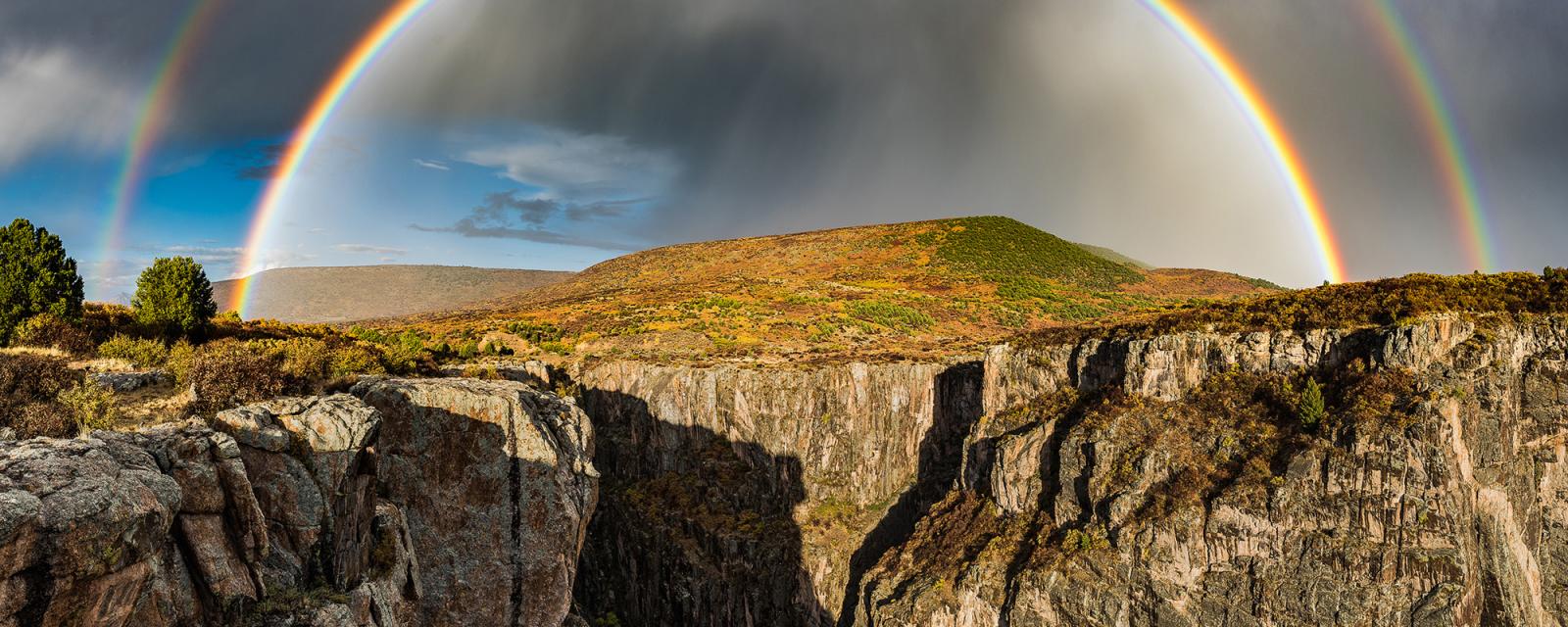The Ute Museum's journey into the future
As a child, Regina Lopez-Whiteskunk used to visit the Ute Indian Museum in Montrose with her family at least once a year. “There’s a big concrete tepee right outside the museum,” she says, “and there was some water that came up there. My parents made sure we always drank from the spring.” It was an annual rite of renewal, the family’s way of refreshing their ties to the land of their people.
Now Lopez-Whiteskunk has helped refresh the Ute Indian Museum itself. The facility reopened in June with a new wing, updated exhibits, and a fresh look at Colorado’s most deeply rooted population.
As a key member of the team that crafted the museum’s new look and feel, Lopez-Whiteskunk sums up the changes in three words: We’re still here. “The old museum only focused on our past,” she says. “But we’re part of Colorado’s present and future too.”
“They’ve journeyed a long way,” says Museum Director CJ Brafford, “and they’re here to share their story. They’re speaking to us, and we’re listening. They’re telling their own story, rather than having it told for them by outsiders.”
Coloradans can’t know themselves if they don’t know the Utes, Brafford adds. “This is their land,” she says. “The Utes’ story is Colorado’s story.”
It stretches back many centuries. The Utes lived in Colorado long before the first Europeans reached North American shores. Their ancient shelters and wickiups still dot the mesatops and valleys of western Colorado, and their names still adorn landmarks such as the Uncompahgre Plateau, Saguache Range, Yampa River, and Pagosa Springs.
By the time Mexican and American pioneers began settling here in the 19th century, the Utes controlled a vast empire that stretched from the Colorado prairies across the central Rockies to the deserts of Utah. But the story turned tragic after the Civil War, as US soldiers and treaty negotiators methodically boxed the Utes into ever-smaller parcels of land. By 1900 the tribe’s once sprawling homeland had been reduced to three small reservations: the Ute Mountain Ute and Southern Ute reservations in Colorado, and the Uintah-Ouray reservation in Utah.
But the Utes’ journey didn’t end there – and that’s a core change in how the museum tells their story.
“We’re still a vibrant people,” says Lopez-Whiteskunk, a former member of the Ute Mountain Ute tribal council. “The old museum showed the territory the tribes used to roam, the clothes they wore, old artifacts, pictures of the Bear Dance, and that sort of thing. But these are living traditions. We still hold Bear Dances today. We honor our ancestors’ way of life, but we’re also evolving and adapting along with the rest of Colorado.”
Originally built in 1956, the museum sits on the former ranch of the Ute leader Ouray and his wife, Chipeta. As chief of the tribe’s Uncompahgre band during the 1860s and 1870s, Ouray had the impossible task of safeguarding the Utes’ future while waves of white settlers overran their territory. Chipeta’s grave sits on the museum grounds, and she and Ouray are both heavily represented in the museum’s artifact collections.
History Colorado, the state agency that owns the museum, began planning the renovation in 2013. All three Ute tribes were invited to participate from the beginning, a welcome change from previous efforts to interpret the tribes’ history. As Ute Mountain Ute leader Ernest House, Jr., wryly puts it: “We’re at the table now; we’re not on the menu.”
The collaboration extended to the architectural design of the museum’s new wing, which adds nearly 4000 square feet. The addition features rounded shapes and organic facings to emulate the look and feel of traditional Ute homes, along with bright colors that reflect the tribe’s visual sensibility. Perhaps most important, the new wing incorporates broad windows to create an open feel, flooding the building with natural light and views of the landscape the Utes have always called home.
The new exhibits, Brafford says, “tell a more complete story than the older exhibits did. We’re talking about contemporary issues. The Utes have moved forward like everyone else. They’re business owners. Many of them are combat veterans. Traditions are evolving.”
“We focus a lot on the young generations,” she adds. “They live in two worlds. They’re being taught to remember the old ways, but they also live in the modern world. They’re walking around like any other American kid with iPads, smartphones, and earbuds.”
“We wanted the newer exhibits to focus on contemporary Ute life,” says Lopez-Whiteskunk, “and how our culture is a living culture.” The displays include some contemporary Ute beadwork, including a beaded cellphone case, as well as a series of thenand- now images that trace the evolution of the Bear Dance from the 19th century to the present day.
Just as important, she says, are exhibits that detail the Utes’ successful business ventures. The Ute Mountain Ute and Southern Ute tribes control significant oil and gas reserves, making them important players in Colorado’s energy development industry. They’re also prominent in the tourism industry, operating a suite of casinos, museums, and tribal parks that welcome thousands of people every year.
“We want the museum to show where we are today,” says Lopez-Whiteskunk, “not only where we’ve come from.”
“I’ve had a deep relationship with the Ute Indian Museum since I was a young child,” she adds. “It has always been important to me. But it grew more important as I became a mother and grandmother, because it builds a connection between the ancestors who knew the past so well, the place we came from, and the young people who will carry our story forward. The new museum is a fabulous opportunity to strengthen those connections.”




